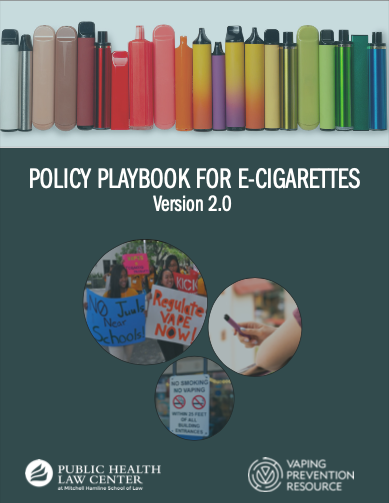Lined up end-to-end, the disposable e-cigarettes sold and (presumably) trashed annually in the U.S. could stretch across the country and back again, accordi…
The Latest
Fandom has partnered with “The Real Cost” to bring fans a very different sort of activation at San Diego Comic-Con this year, in support of a youth vaping p…
Disposable, flavored vapes are not supposed to be sold in the U.S. The Food and Drug Administration began cracking down on vaping in 2020, by requiring e-ci…
A U.S. House Appropriations Subcommittee approved legislation (the Fiscal Year 2024 Labor, HHS, Education and Related Agencies funding bill) that would grea…
Disposable, flavored vapes are not supposed to be sold in the U.S. The Food and Drug Administration began cracking down on vaping in 2020, by requiring e-ci…
A U.S. House Appropriations Subcommittee approved legislation (the Fiscal Year 2024 Labor, HHS, Education and Related Agencies funding bill) that would grea…
youth vaping by the numbers
1 in 4
84.7%
$217 million
86.3%
18.3%
40.2%
harmful effects of vaping
Vaping can have harmful effects on health. Long-term effects are still emerging. Here’s what we know so far:
- Park-Lee E, Ren C, Sawdey MD, et al. Notes from the Field: E-Cigarette Use Among Middle and High School Students — National Youth Tobacco Survey, United States, 2021. MMWR Surveill Summ 2021;70:1387–1389. DOI: http://dx.doi.org/10.15585/mmwr.mm7039a4
- Welding K, Marynak K, Kelley D, Kennedy R. (2021). ENDS Advertising Markets in the United States, 2015 to 2020.
- Wang TW, Gentzke AS, Creamer MR, et al. Tobacco Product Use and Associated Factors Among Middle and High School Students — United States, 2019. MMWR Surveill Summ 2019;68(No. SS-12):1–22. DOI: http://dx.doi.org/10.15585/mmwr.ss6812a1
- Senders A, Horner-Johnson W. Disparities in E-Cigarette and Tobacco Use Among Adolescents With Disabilities. Prev Chronic Dis 2020;17:E135. Published 2020 Oct 29. Doi:10.5888/pcd17.200161
- Johnson SE, O’Brien EK, Coleman B, et al. Sexual and Gender Minority U.S. Youth Tobacco Use: Population Assessment of Tobacco and Health (PATH) Study Wave 3, 2015-2016. Am J Prev Med. 2019 Aug;57(2):256-261. https://pubmed.ncbi.nlm.nih.gov/31326009.
- Obisesan OH, Mirbolouk M, Osei AD, Orimoloye OA, Uddin SMI, Dzaye O, El Shahawy O, Al Rifai M, Bhatnagar A, Stokes A, Benjamin EJ, DeFilippis AP, Blaha MJ. Association Between e-Cigarette Use and Depression in the Behavioral Risk Factor Surveillance System, 2016-2017. JAMA Netw Open. 2019 Dec 2;2(12):e1916800. doi: 10.1001/jamanetworkopen.2019.16800.
- Becker T, Arnold MK, Ro V, et al. Systematic Review of Electronic Cigarette Use (Vaping) and Mental Health Comorbidity Among Adolescents and Young Adults. Nicotine Tob Res. 2021 Feb 16;23(3): 418-25. https://academic.oup.com/ntr/article/23/3/415/5903402
- Kresovich A, Sanzo N, Brothers B, Prentice-Dunn H, Boynton MH, Sutfin EL, Sheeran P, Noar S. What’s in the message? An analysis of themes and features used in vaping prevention messages. Addict Behav Rep. 2021 Dec 27;15:100404.






